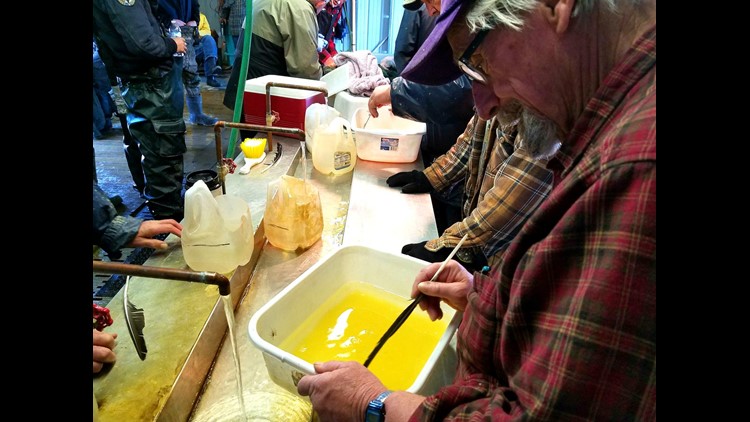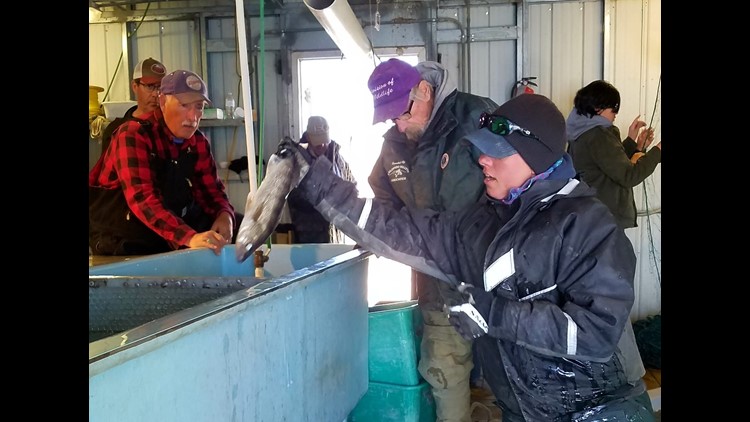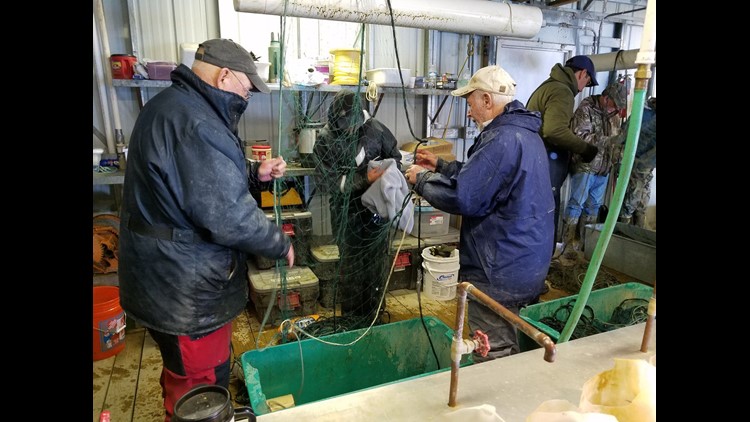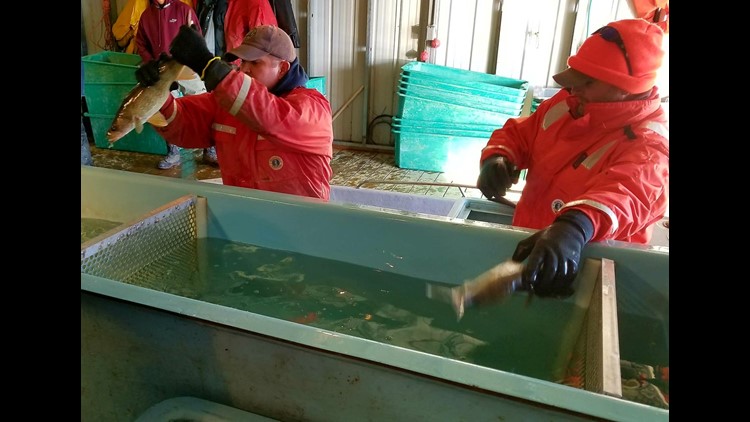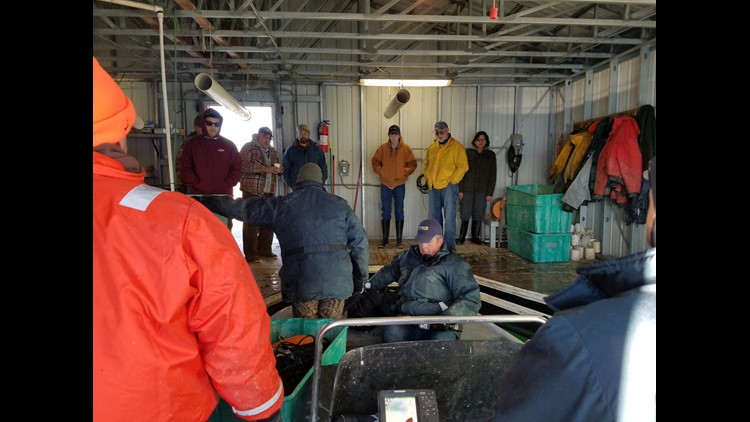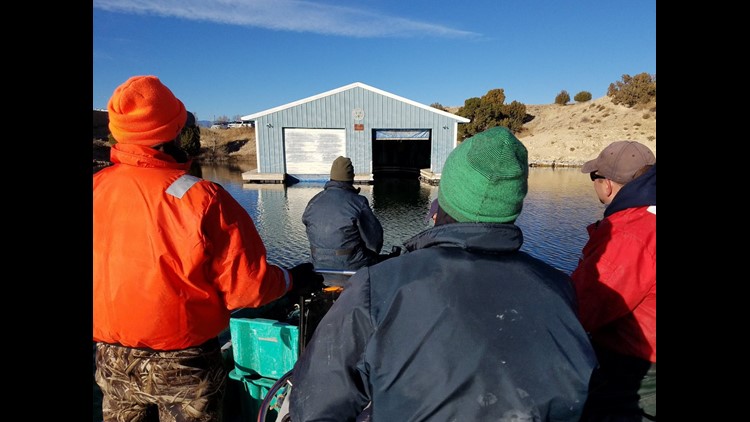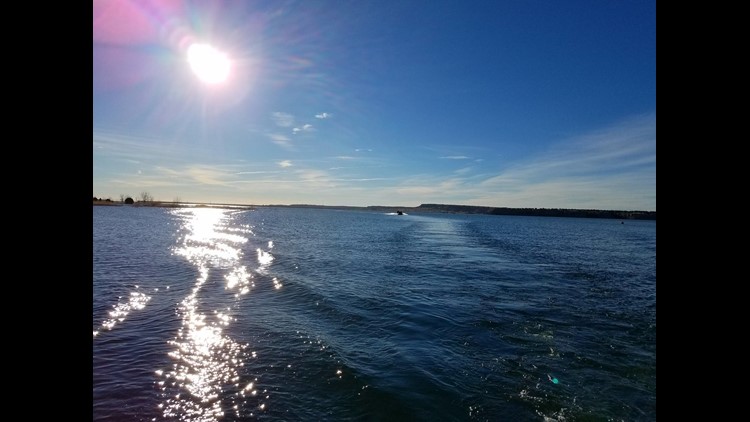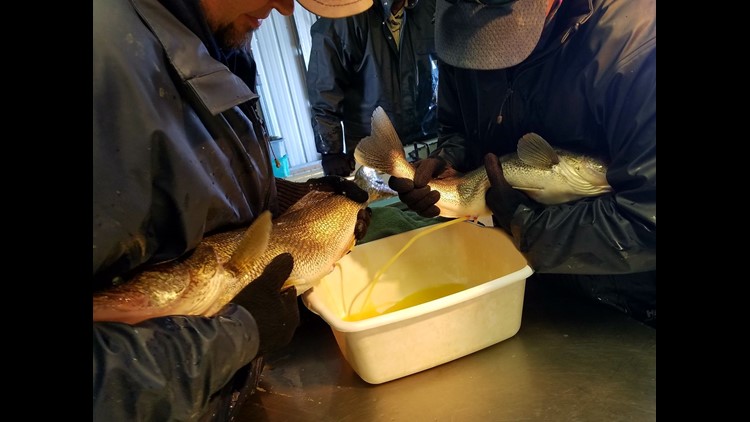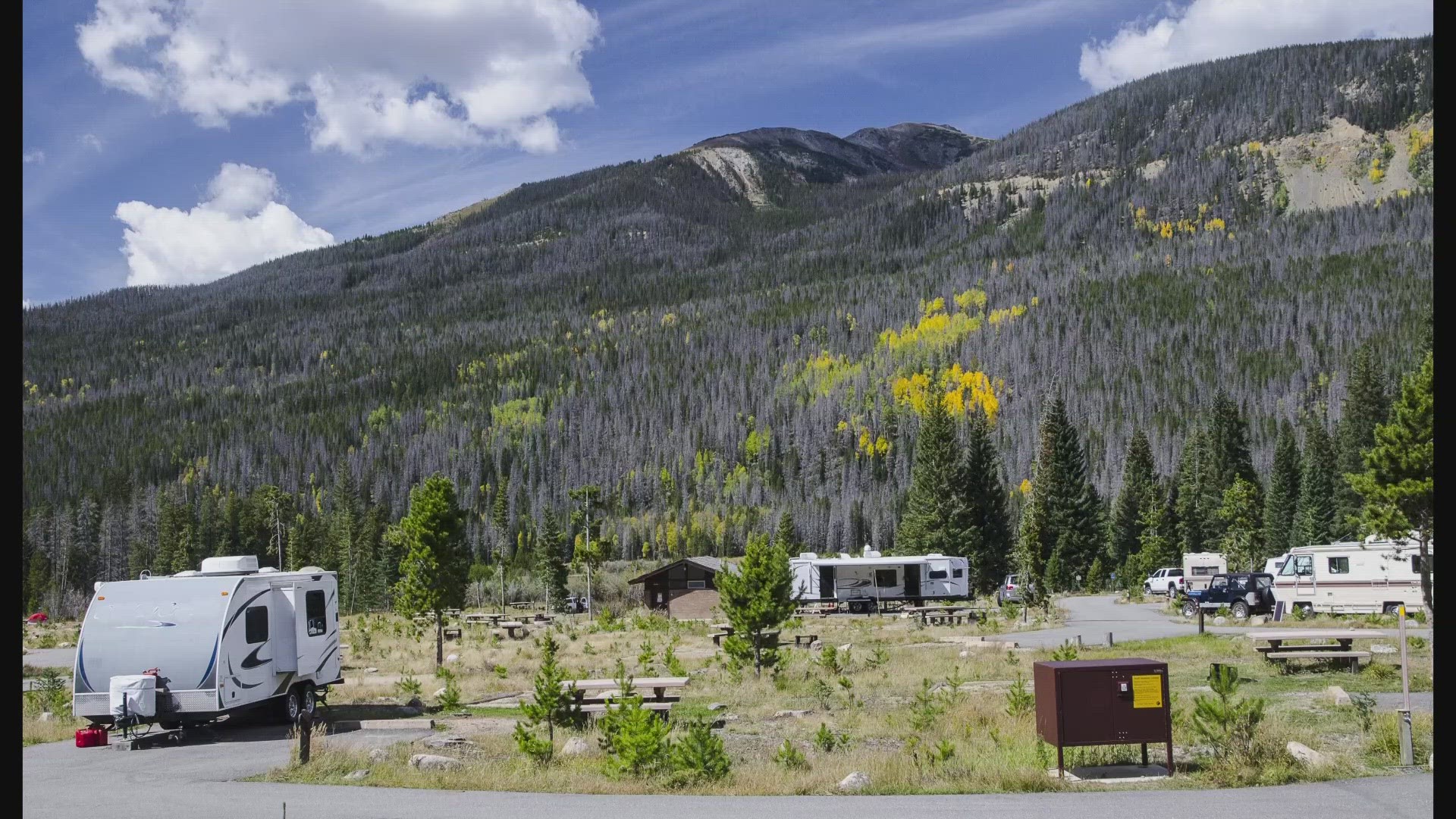There's a cool project happening at several reservoirs across Colorado. Aquatic biologists and volunteers are doing their part to "grow fish."
Every spring, when walleye begin to spawn, teams from Colorado Parks and Wildlife take their boats onto reservoirs and lay out dozens of nets.
At Lake Pueblo State Park in southern Colorado on Tuesday, volunteers helped aquatic biologists collect dozens of walleye.

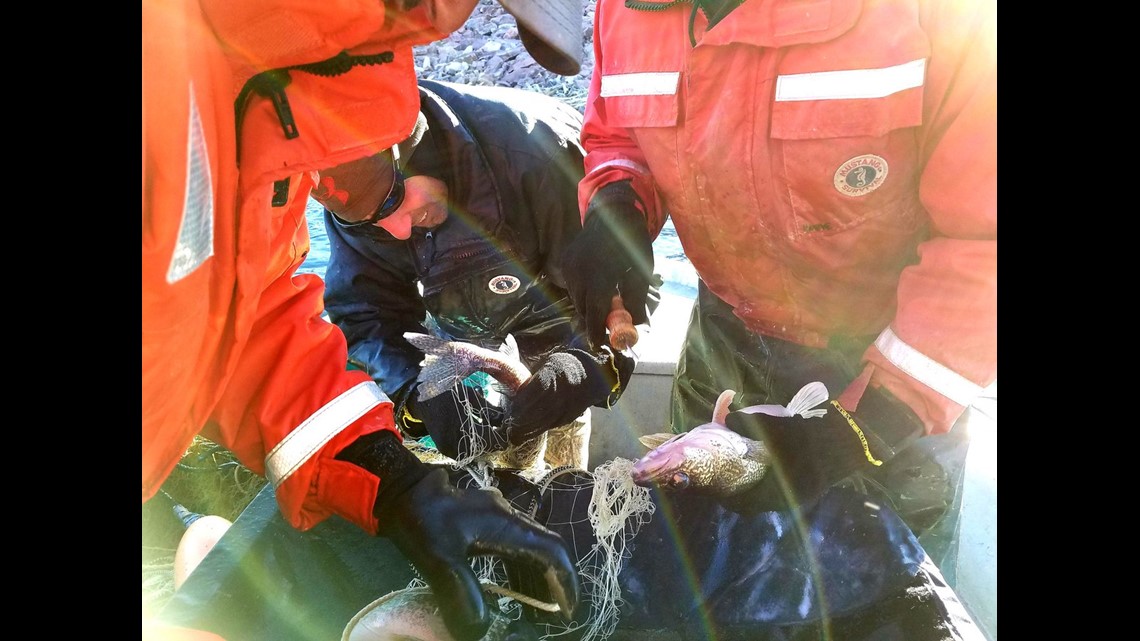
They first separate the walleye from the rest of the fish, then separate the male and female fish. The goal is to harvest the sperm and eggs from the fish, which is also called the "milt and roe."
From there, they strip the milt and roe from the fish, and put it into tubs mixed with tannic acid and water. Volunteers are then tasked with stirring the mixture using goose feathers that come from the tips of the wings of geese.

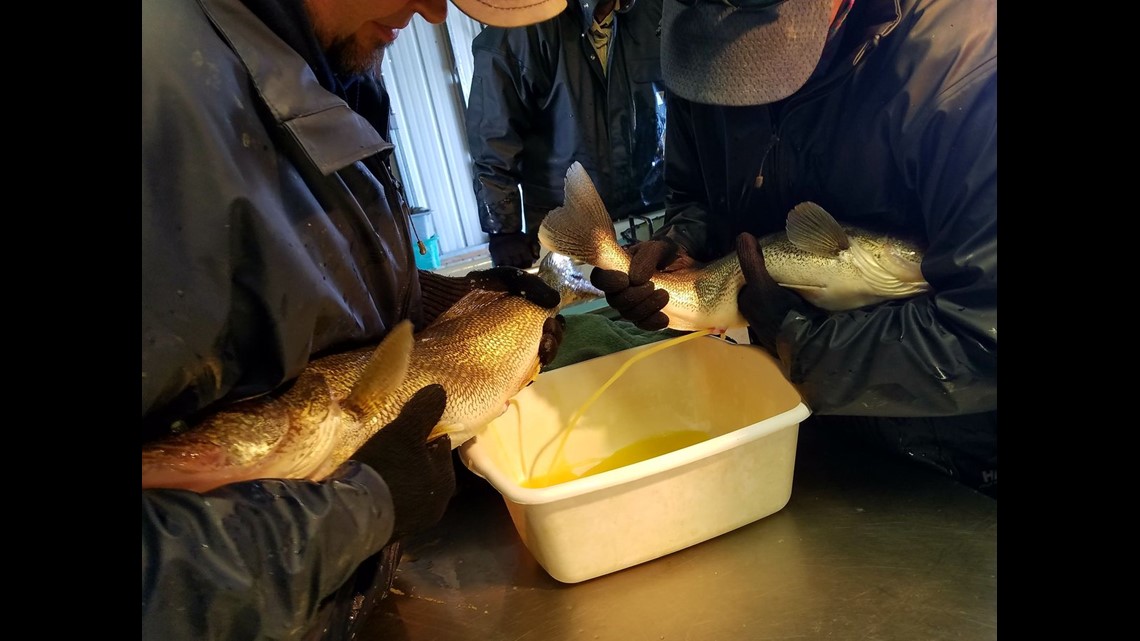
If it sounds random, it’s because it is -- the particular type of feather is apparently the most efficient stirring tool. It helps the milt fertilize the row and eventually grow little fish.
Colorado Parks and Wildlife said in Pueblo on Tuesday, aquatic biologists and volunteers stripped 52 females, harvesting about 75,000 eggs per female fish. The goal by the end of the spawn is to harvest 139 million eggs. This process is playing out at Lake Pueblo, Cherry Creek Reservoir and Chatfield Reservoir over the next few weeks.

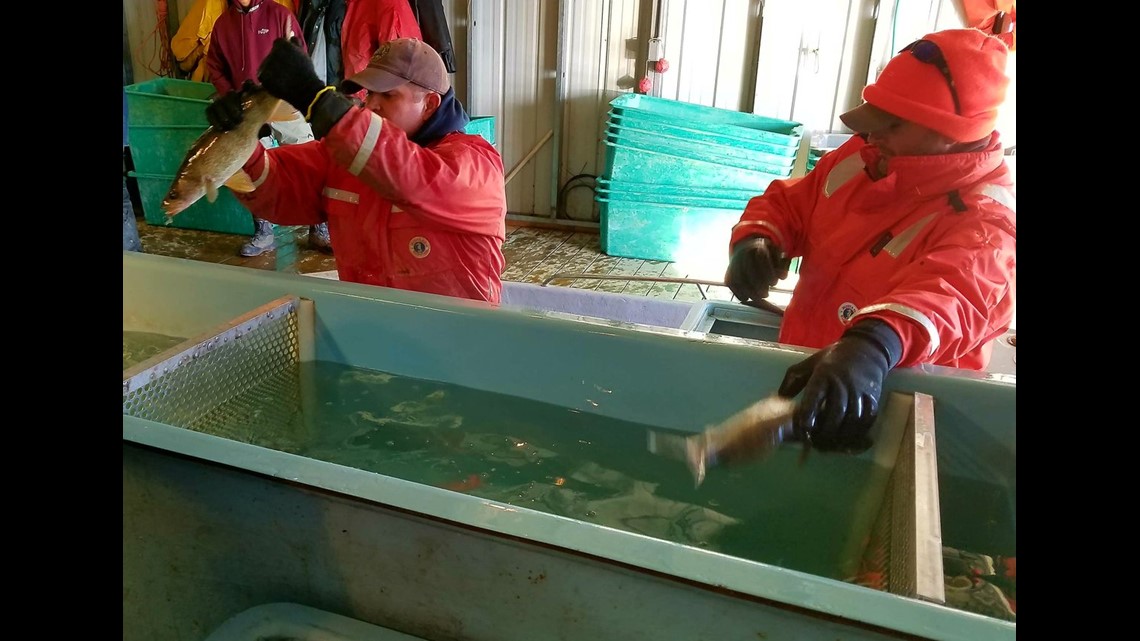
The work continues until one of three things happens: biologists reach their goal for fertilized eggs, the spawn ends or the lake water temperatures rise resulting in too many other species being caught.
The milt and roe mixture is taken to hatcheries in the state where the fish will hatch within about two weeks. CPW officials say the fish will then stay at the hatcheries for about three years before being released in waters across the state.

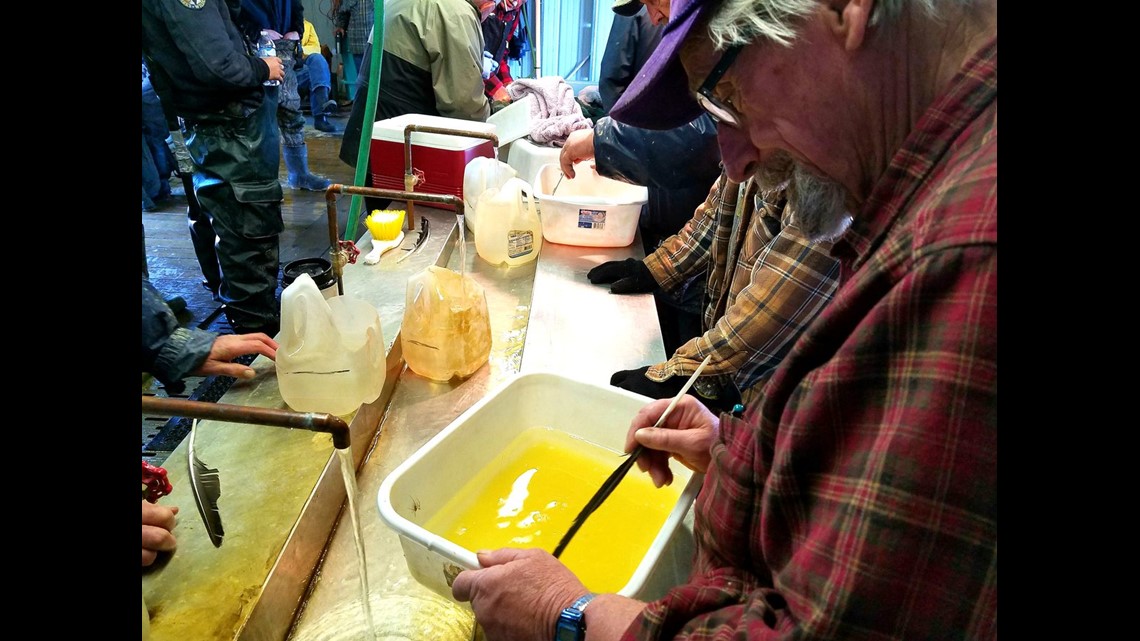
According to Colorado Parks and Wildlife officials, staff and volunteers put in long hours over the intense four-week period to ensure the fish are stocked by summer.
“This spring ritual has been going on for more than three decades and is repeated, simultaneously, by CPW staff and volunteers at Lake Pueblo State Park, Cherry Creek State Park, and Chatfield State Park near Denver,” said Lauren Truitt with Colorado Parks and Wildlife.
Truitt says walleye are one of the most popular sport fish, but have a hard time reproducing in Colorado because they are not native to our state.

